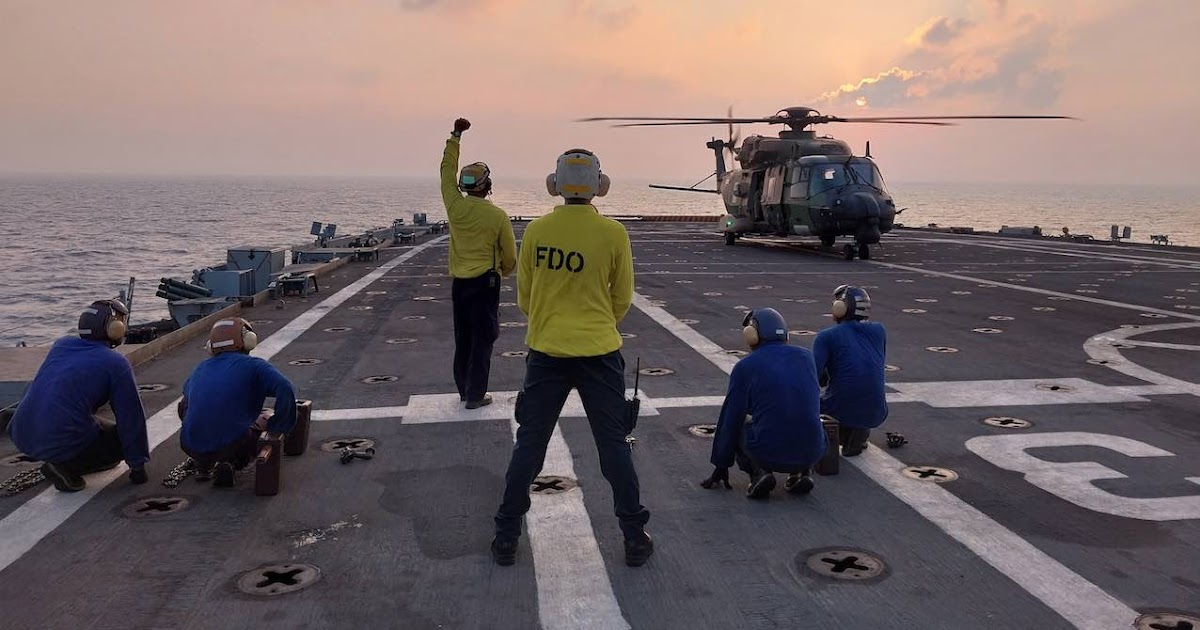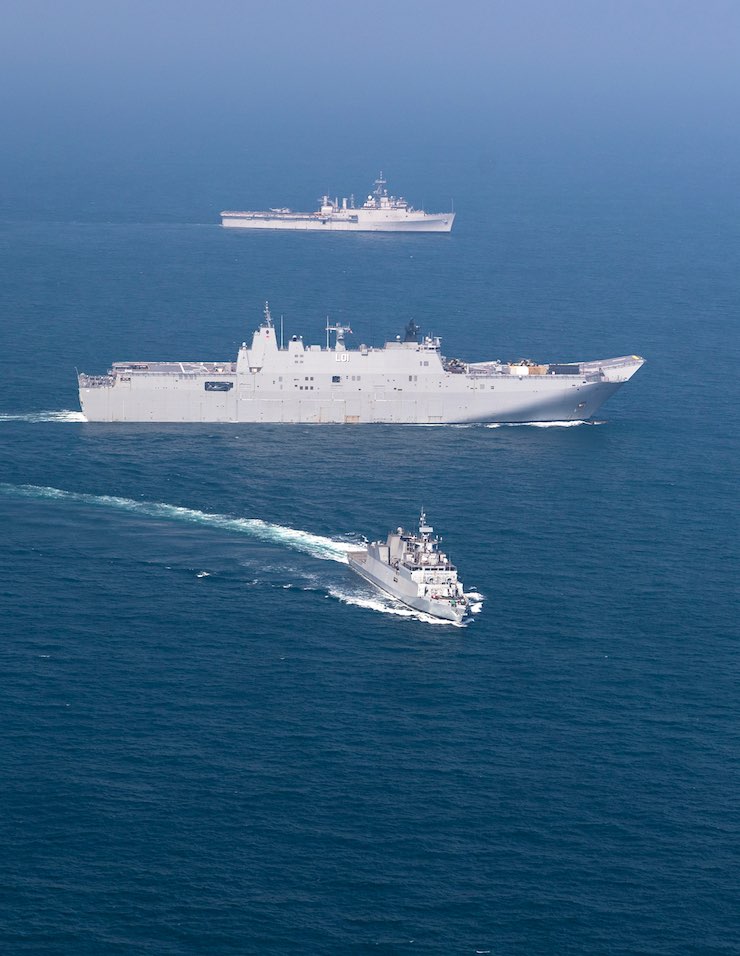
A Royal Australian Navy helicopter makes a landing on an Indian warship as part of interoperability training
By Vikas Gupta
Trade Standard, Nov 6, 22
Underscoring the importance that New Delhi is in line with its growing defense engagement with Tokyo, Admiral R Hari Kumar, Chief of Naval Staff (CNS) arrived in Japan for a visit from November 5-9 .
In Japan, Kumar will attend the inauguration of the 2022 edition of the MALABAR exercise, which will be held off Yokosuka. Four countries – Australia, Japan, the United States and India – will take part in the exercise 30e anniversary of the MALABAR exercise.
Prior to Exercise MALABAR, the Indian CNS met with its counterparts from the Royal Australian Navy, the The Japan Maritime Self-Defense Force (JMSDF) and the United States Navy on Saturday.
Exercise MALABAR includes sophisticated naval drills, in which the four navies practice engaging a hostile power (a euphemism for China) that has acted aggressively to block freedom of navigation and disrupt shipping lanes in the Western Pacific.
Exercise MALABAR, which first took place in 1992 as a bilateral naval exercise between the US and Indian navies, has steadily grown in size and sophistication. Along the way, he co-opted the Australian and Japanese navies and incorporated real combat drills – such as anti-submarine patrols – that would be used against China in real conflict.
“Leaders exchanged views on improving interoperability in future editions of MALABAR,” said the Indian Ministry of Defense (MoD).
In 2011, after China’s navy, called the People’s Liberation Army (Navy), or PLA(N), began aggressively patrolling the South China Sea and began occupying disputed islands between China and other Coastal states, President Barack Obama expressed his concern by announcing a “pivot to Asia”. This involved redeploying up to 60% of the US Navy to the Western Pacific.
Strategist Bruce Jones said, “The Western Pacific is today becoming what East Germany was in the Cold War; the front line of tensions between the world’s major military powers. Its deep waters have replaced the heart of Europe as the fault line of geopolitical tensions.
The PLA(N) wants dominate a maritime defense perimeter encompassing the South China Sea, East China Sea, Yellow Sea and Bohai Gulf. These waters stretch to what is called the First Island Chain, stretching from Sakhalin in the north to Borneo in the south, along the Kuril Islands, Japan, Ryukyu Islands, Taiwan, northern Philippines and Borneo. The PLA(N) believes that this maritime space must be dominated for the physical security of China’s coastal economic powers, to assert its maritime claims and to deter Taiwan.
In the early 2000s, a more ambitious Beijing embraced the concept of “distant seas,” looking several hundred miles further afield. This is to dominate the approaches to the second island chain, which runs north to south from the eastern edge of the Japanese Archipelago, along the line joining Bonin and Marshal Islands, the Marianas, Guam and the archipelago of Palau.
China has partnered with Russia and Iran to build naval capabilities. The three countries have stepped up joint naval exercises, including in the Mediterranean in 2015, the South China Sea in 2016, the Yellow Sea in 2018 and the East China Sea in 2019. Joint exercises in 2019 and 2022 included Iran.
In January 2022, China and Russia announced a “limitless” partnership at a summit in Beijing. As the two countries grow closer, Russia appears likely to agree to allow China access to its global network of overseas naval bases, giving it the global reach it does not yet have.
In Japan, Kumar will also attend a International Fleet Review (IFR) in Yokosuka on November 6, conducted by the JMSDF to commemorate the 70eanniversary of his formation.
To participate in the IFR and exercise MALABAR – 2022, two Indian warships – Indian Naval Ship (INS) Shivalik and Kamorta – has alreadyarrived in Yokosuka. This is a significantly lower turnout than in previous years.
Even so, the Indian Ministry of Defense claims that the presence of locally built Indian warships at these multinational events will provide an opportunity to showcasing the nation’s warship building capabilities.
“As one of the observation marines in the Western Pacific Naval Symposium (WPNS), the CNS will participate in the 18e WPNS on November 7-8 in Yokohama, hosted by Japan, as the current Chairman of WPNS,” the MoD announced.
India’s CNS would also be “interact with counterparts and other heads of delegations from nearly 30 countries participating in IFR, WPNS and MALABAR,” the MoD said.

Australian and Indian warships exercise together
Even as preparations for Exercise MALABAR continued, the Indian and Australian navies conducted a maritime partnership exercise in the Bay of Bengal from 2-3 November. Australian Navy ships HMAS Adelaide and HMAS Anzac participated, as well as Indian Navy ships INS Jalashwa and Kavaratti. According to a statement from the New Delhi MoD, “The exercises included tactical maneuvers, helicopter landings and amphibious operations.






